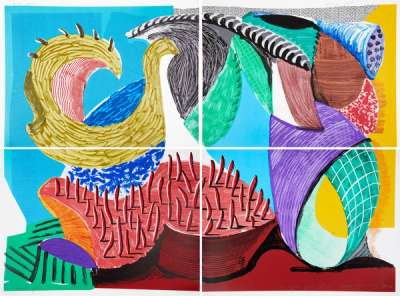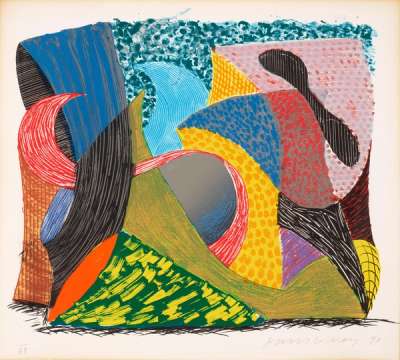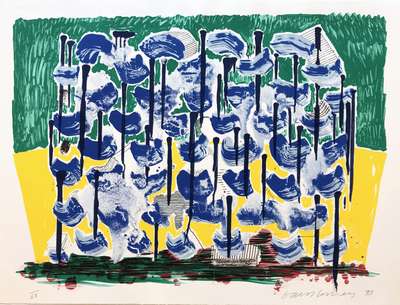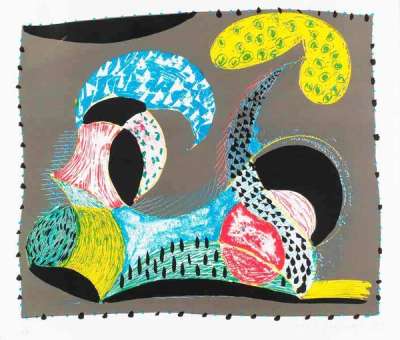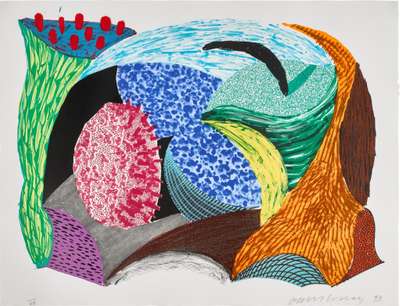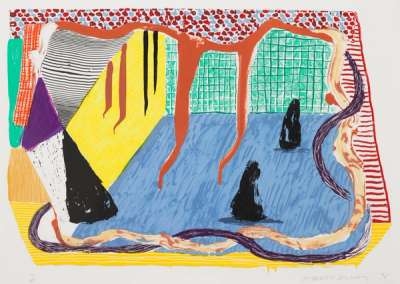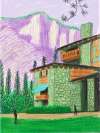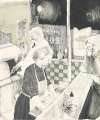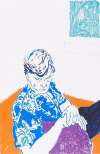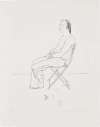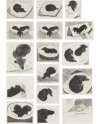Some
New Prints
Featuring vibrant colours and daring compositions this series David Hockney’s Some New Prints is a compelling representative of his ‘90s work, a time when he was deeply concerned with ideas around set design, perspective, and colour.
David Hockney Some New Prints For sale
Some New Prints Value (5 Years)
Works from the Some New Prints series by David Hockney have a strong market value presence, with 60 auction appearances. Top performing works have achieved standout auction results, with peak hammer prices of £60927. Over the past 12 months, average values across the series have ranged from £16416 to £33403. The series shows an average annual growth rate of 8.17%.
Some New Prints Market value
Auction Results
| Artwork | Auction Date | Auction House | Return to Seller | Hammer Price | Buyer Paid |
|---|---|---|---|---|---|
 Four Part Splinge David Hockney Signed Print | 25 Nov 2025 | Bonhams New York | £29,750 | £35,000 | £45,000 |
 Ink In The Room David Hockney Signed Print | 15 Mar 2025 | Ketterer Kunst Hamburg | £12,325 | £14,500 | £22,000 |
 Blue Hang Cliff David Hockney Signed Print | 26 Mar 2024 | Bonhams Los Angeles | £13,600 | £16,000 | £20,000 |
 Warm Start David Hockney Signed Print | 21 Sept 2023 | Bonhams Skinner | £8,500 | £10,000 | £12,500 |
 Going Out David Hockney Signed Print | 19 Jul 2023 | Christie's New York | £9,775 | £11,500 | £16,000 |
 Slow Forest David Hockney Signed Print | 28 Sept 2022 | Christie's London | £5,525 | £6,500 | £9,000 |
Sell Your Art
with Us
with Us
Join Our Network of Collectors. Buy, Sell and Track Demand
Meaning & Analysis
Stemming from Hockney’s Some Very New Paintings series from 1992, Some New Prints experiment with colour and form in a style drawn from modernism. Here we find him playing with abstraction once more with colourful compositions that recall modernists such as Sonia Delaunay as well as British painter Howard Hodgkin. The works in this series are often compared to the sets he made for operas and the artist himself has confirmed the link, stating, “I started the group calledSome Very New Paintings in 1992 after I had finished my set designs for Die Frau Ohne Schatten. These started simply and grew more and more complex. I soon realised that what I was doing was making internal landscapes, using different marks and textures to create space, so that the viewer wanders around.”
With this knowledge we can start to read the works as landscapes, detecting hills and roads, waves and fields in the thrilling forms that make up these captivating prints. Hockney combines lithography and screen printing to great effect, creating a catalogue of marks, dots and washes, utilising the various layers of contrast between rough and smooth, flat and textured areas of colour.
In works such as Blue Hang Cliff and Going Out, Hockney once again presents us with a Cubist view of his surroundings, offering up multiple perspectives in a nod to Picasso and asking us to realign our associations with the genre by applying its distortion to the landscape of Southern California as opposed to cosmopolitan Paris.
Four Part Splinge sees Hockney working across four sheets to achieve a whole composition that measures more than 1.2 x 1.6 meters. Hockney had worked with splitting his images before with his Paper Pools series and would return to this fascination with grids in series such as Iceland and Norway (2002) and his video installations Four Seasons (Woldgate Woods) which saw him split a Yorkshire landscape into smaller parts to create a composite whole. These works in turn recall his earliest photo collages where a landscape or interior is fragmented into dozens of individual photographs which are then stuck together again to form a simulacra of the original scene, making room for multiple viewpoints rather than the fixed single perspective that Hockney believes the camera is trapped by.
